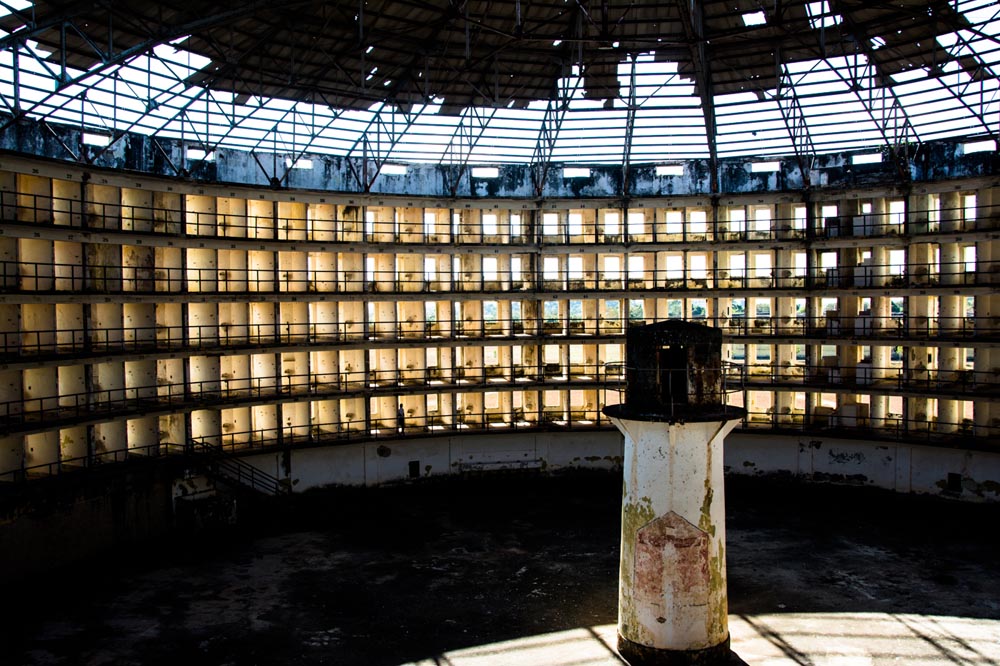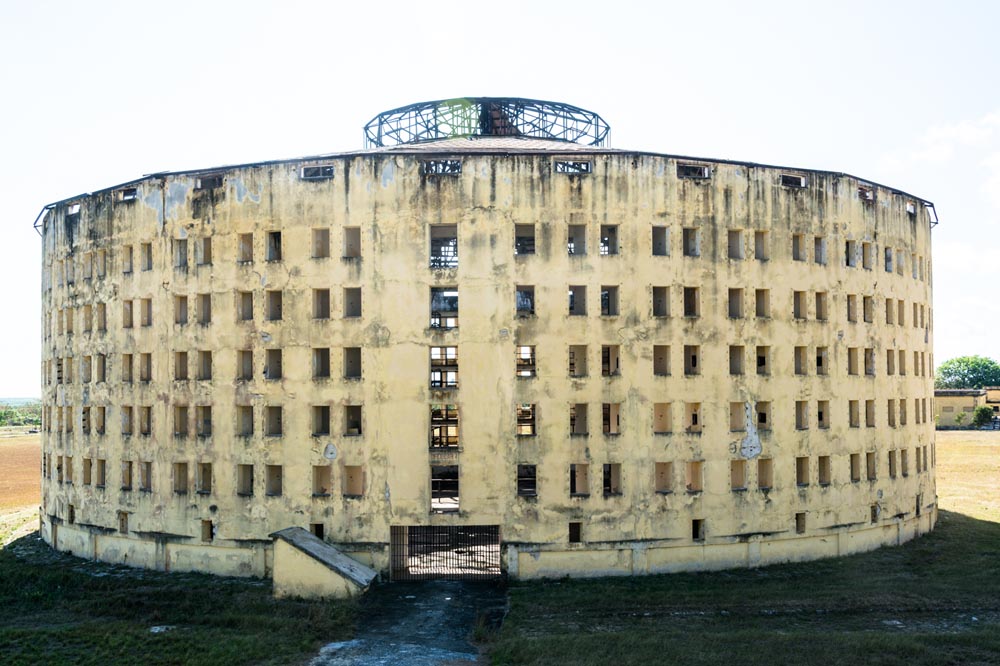












Circular 4 is one of the four round prison buildings at the Presidio on the Isla de Juventud, Cuba. Fidel Castro and his brother Raul were imprisoned there between 1953 and 1955. The “panopticon design” is based on Jeremy Bentham’s idea (1785) that “persons inspected should always feel themselves as if under inspection.” The design – a tower in the center of stories of small cells – allows prisoners to be observed without them being able to tell that they are being watched. Another feature of the design – protracted partitions – cuts off from each prisoner the view of every other prisoner. The “mess hall” where meals were served makes use of the same design. After taking over the government in 1959, the prison was used to jail political dissidents, counter-revolutionaries, homosexuals, Jehovah’s Witnesses and anyone else considered unfit or an enemy to the new socialist Cuban state. It became overcrowded (designed for 2,500, the population swelled to 6,000) and resulted in riots and hunger strikes. Now a museum, the prison was “retired” in 1967 when it became an embarrassment to the Cuban government. The panopticon design was meant to be a way to use the architecture of invisible omniscience to be oppressive; to impose authoritarian power and desolation to create vulnerability. Physical abuses and corruption flow from total control.